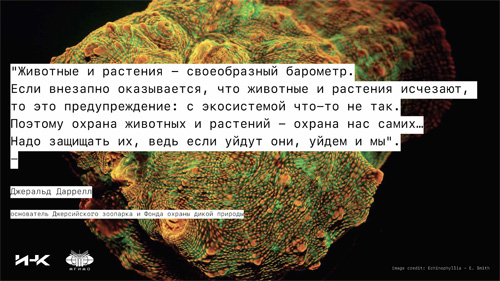Dataset “Humanization of economic growth in the global economy: Big Data and digital modeling – 2024”
Просмотров: 2305
The problem of humanization of economic growth through achievement of the balance of social and economic, public and private interests has been present during the whole history of industrial revolutions. In the 20 th century, in the period of initial industrialization and prosperity of industry, the set problem was solved in some countries (USSR, Germany, France, Italy, and Cuba) by building socialism with a perspective of transition to communism, and in other countries (UK and USA) – by building capitalism and imperialism.
As the practical experience of implementation of the both historical models of humanization of economic growth showed, they are not very effective and the priorities that they proclaim cannot be achieved in practice. Later practices of solving the formulated problem, which envisage combination of the historical models, showed their effectiveness – but they are not universal and could be applied only in a strict context. For example, the Chinese model of communist market economy is based on a unique social mode and traditional culture. It could be implemented only on China, and its copying and dissemination in other countries might not ensure humanization of economic growth, and might even lead to socio-economic crises.
In the 21 st century, the start of the Fourth industrial revolution, which marked the transition to the digital technological mode (Industry 4.0) announced a new age of domination of industry. Neo-industrialization based on breakthrough technologies and “smart” management is rather dangerous for humanity, as it opens expanded opportunities for flexible setting of the parameters of industrial production. If the target goals for “smart” companies are commercial interests (profit, profitability, and efficiency) without consideration of public interests (support for employment, realization of human potential, and rational nature use), this might cause a social crisis, as quality of life and living standards of the population will decrease to a critically low level.
The “market gap” during humanization of economic growth in the conditions of the digital economy is to be overcome by the state. For this, Sustainable Development Goals have been adopted, and the corresponding national initiatives are implemented. In the modern economic conditions and the near future, the problem of humanization of economic growth will be solved based on formation of the social market economy, in which the balance of interests of economy's development and social progress is achieved. Though a concept of the social market economy has been actively developing in recent years, this process is slowed down by underdevelopment of the empirical basis.
At present, certain social indicators of economy within large-scale reports are available: “The Global Competitiveness Report” of the World Economic Forum and “Human Development Report” of the United Nations Development Program (UNDP), or thematic studies of humanization of economic growth for a narrow list of countries. An example is “Sustainable Governance Indicators”, calculated by Bertelsmann Stiftung, which reflect the effectiveness of state management, quality of democracy, and other social characteristics of economy in the OECD and EU countries. Here it is also necessary to note “Social Justice in the EU and OECD Index Report 2019”, prepared by Thorsten Hellmann, Pia Schmidt, and Sascha Matthias Heller – experts of Bertelsmann Stiffung.
For the purpose of creation of a reliable empirical basis, which would allow for global scientific studies on the topic of humanization of economic growth, the Institute of Scientific Communications has developed a dataset which contains the most relevant indictors on this topics, which are available for most countries. The dataset contains the most up-to-date values of the indicators for 2020, which could be used for R&D on the topic of humanization of economic growth. The dataset is an interactive digital data base, which could be processed with the help of intellectual analytics based on Dig Data technologies and could be used for digital modeling of the process of humanization of economic growth in the modern national and global economies.
The dataset contains the following indicators of humanization of economic growth (the higher the indicators' values, the better – unless stated otherwise):
1. Humanization of state regulation of economy:
• Liberality of economy. The original title of this indicator is “checks and balances”. It is calculated by the World Economic Forum within “The Global Competitiveness Report 2019” and reflects the transparency of state budget, independence of judicial system, effectiveness of the legal base in complex normative acts, and freedom of speech and press;
• Efficiency of regulation. The original title of this indicator is “public-sector performance”. It is calculated by the World Economic Forum within “The Global Competitiveness Report 2019” and reflects the burden of state regulation, effectiveness of the legal basis during resolution of economic disputes, and opportunities for online participation of population in state management (e-participation);
• Transparency of regulation. The original title of this indicator is “transparency”. It is calculated by the World Economic Forum within “The Global Competitiveness Report 2019” and reflects the level of corruption and efficiency of measures on fighting corruption;
• Protection of property rights. The original title of this indicator is “property rights”. It is calculated by the World Economic Forum within “The Global Competitiveness Report 2019” and reflects the general protection of property rights, quality of land administration, and protection of intellectual property rights;
• Future orientation of regulation. The original title of this indicator is “future orientation of government”. It is calculated by the World Economic Forum within “The Global Competitiveness Report 2019” and reflects stability of state regulation, state's responsibility for the changes and before future generations, support for digital business, long-term vision (strategic orientation), energy efficiency, use of renewable energy, and environment protection;
• Eco-efficiency index. The original title is “Environmental Performance Index”. It is calculated by Yale University and reflects the current state of the environment, eco-system's vitality, and efficiency of the activities on ecological situation improvement .
2. Favorability of social environment for realization of human potential:
• Human potential. The original title is “skills of current workforce”. It is calculated by the World Economic Forum within “The Global Competitiveness Report 2019” and reflects the level of education and training of personnel, qualification of labor resources, and digital skills of population;
• Inequality-adjusted Human Development Index. This indicator is calculated by the UN (UNDP) within “Human Development Report 2019” and reflects the level of social justice during education, employment, career building, payment for work, etc.;
• Poverty headcount ratio at $3.20/ day. This indicator is calculated by the UNDP and is a part of the indicators of “Sustainable Development Report” for 2019, reflecting the share of population below the poverty threshold of $3.2 per day ( the lower the indicator's value, the better );
• Index of economic freedom. This indicator is calculated by the Heritage Foundation and is a part of the report “Country Rankings of Economic Freedom” for 2020, reflecting supremacy of law, level of bureaucratization of state management, effectiveness of regulation, and openness of markets ;
• Prosperity index. This indicator is calculated by Legatum Institute Foundation and is a part of the report “ The Legatum Prosperity Index ™ 2019: Creating the Pathways from Poverty to Prosperity ” , reflecting achievements of countries from the point of view of their well-being and prosperity ;
• Labor efficiency. The original title of this indicator is “GDP per hour worked”. It is calculated by the OECD and shows the cost of products manufactured by 1 worker per 1 hour of work;
• GDP (PPP) per capita . The original title of this indicator is “Gross domestic product based on purchasing-power-parity per capita GDP, current international dollar”. It is calculated by the IMF within “World Economic Outlook Database” and shows purchasing power parity (PPP) value of all final goods and services produced within a country in a given year, divided by the average (or mid-year) population for the same year .
Advantages of the dataset of the Institute of Scientific Communications :
• Consistency and authenticity: collection and systematization of the main statistical data in the data set, as well as their analysis with application of the proprietary methodology of calculation of the index of humanization of economic growth , which allows determining the potential of creation of social market economy in different countries and performing international comparisons;
• Topicality and representativeness: the dataset contains the latest data, which form the basis of empirical studies in 2020;
• Reliability and objectivity: the dataset contains the statistics of the respectable sources of statistical and expert & analytical data on the topic of social entrepreneurship – the World Economic Forum, the United Nations (UNDP), the International Monetary Fund, and the OECD ;
• Informative value: the dataset presents the current international statistics in the Russian language;
• Clarity of the structure: in order to make the work with the dataset simple, quick, and convenient for users, it consists of thematic parts;
• Templates: the dataset offers two templates of data: countries of G7 (developed) and countries of BRICS (developing), countries of the CIS, countries of the EAEU, geographical templates of regions of the world – which allows for quick selection of the necessary data for economic experiments aimed at comparing countries of the main categories, in real-time mode;
• Import of data: the dataset allows selecting the necessary information and importing it in Microsoft Excel for further analytics;
• Interactivity: the dataset allows sorting and combining various data, unifying them in the general data array in the way that is required by each user, as well as building digital models of humanization of economic growth in different countries;
• Ranking: the data has been used for compiling a ranking of humanization of economic growth in different countries in 2020;
• Blockchain principle: firstly, the data are structured logically according to the blockchain principle; secondly, the dataset allows sharing, changing, and processing information as per users' queries'; the initial data remain unchanged, which is very convenient and secure.











